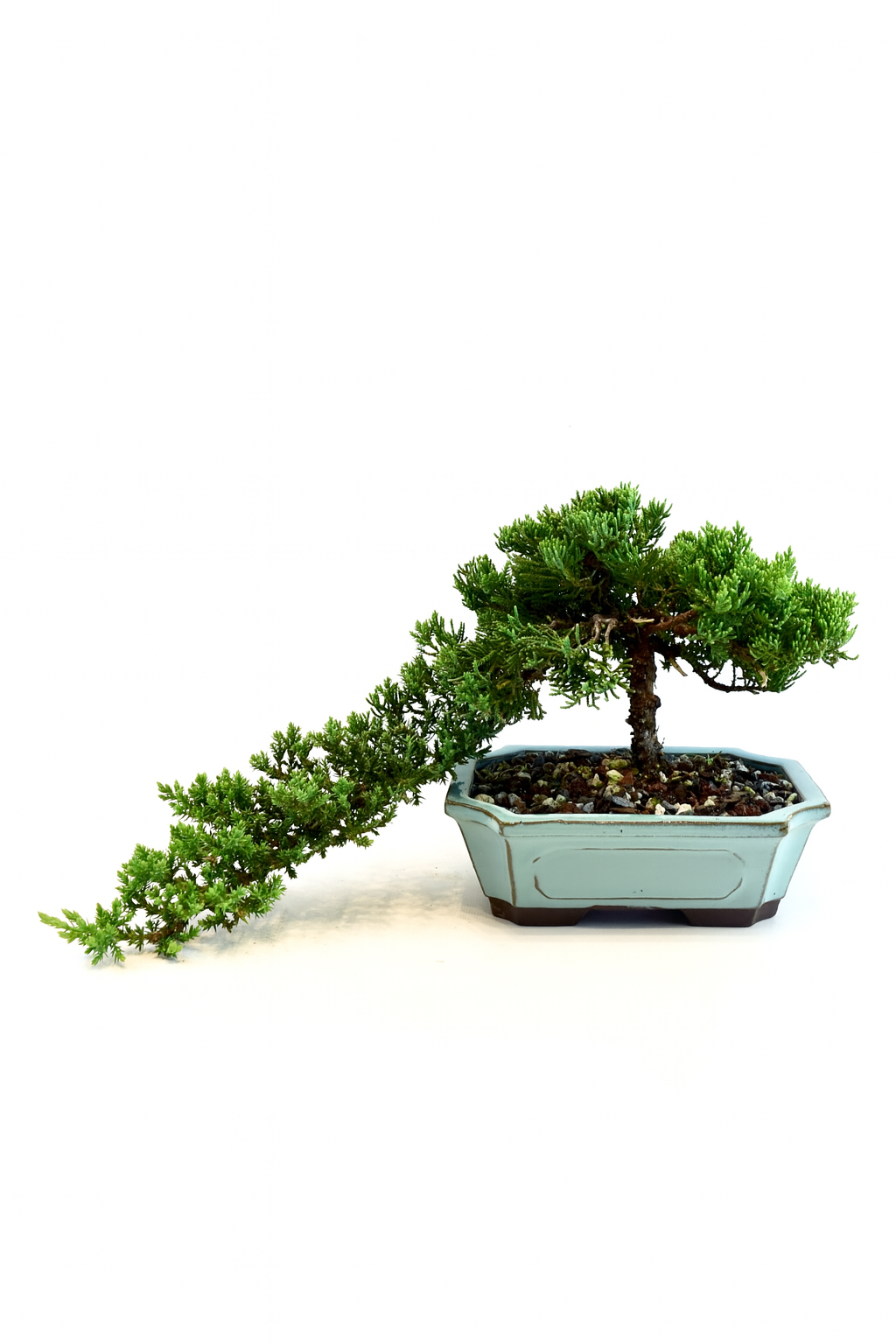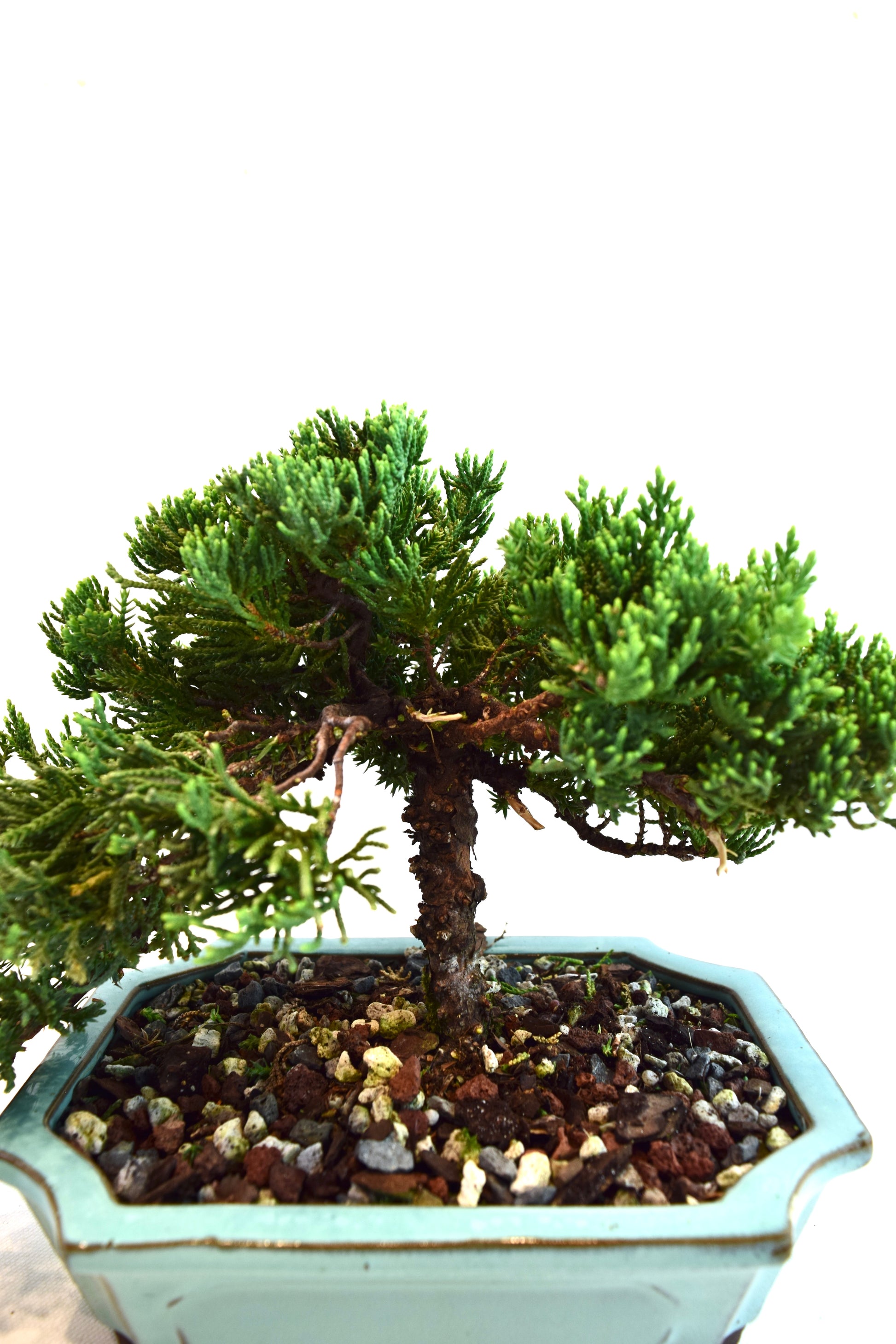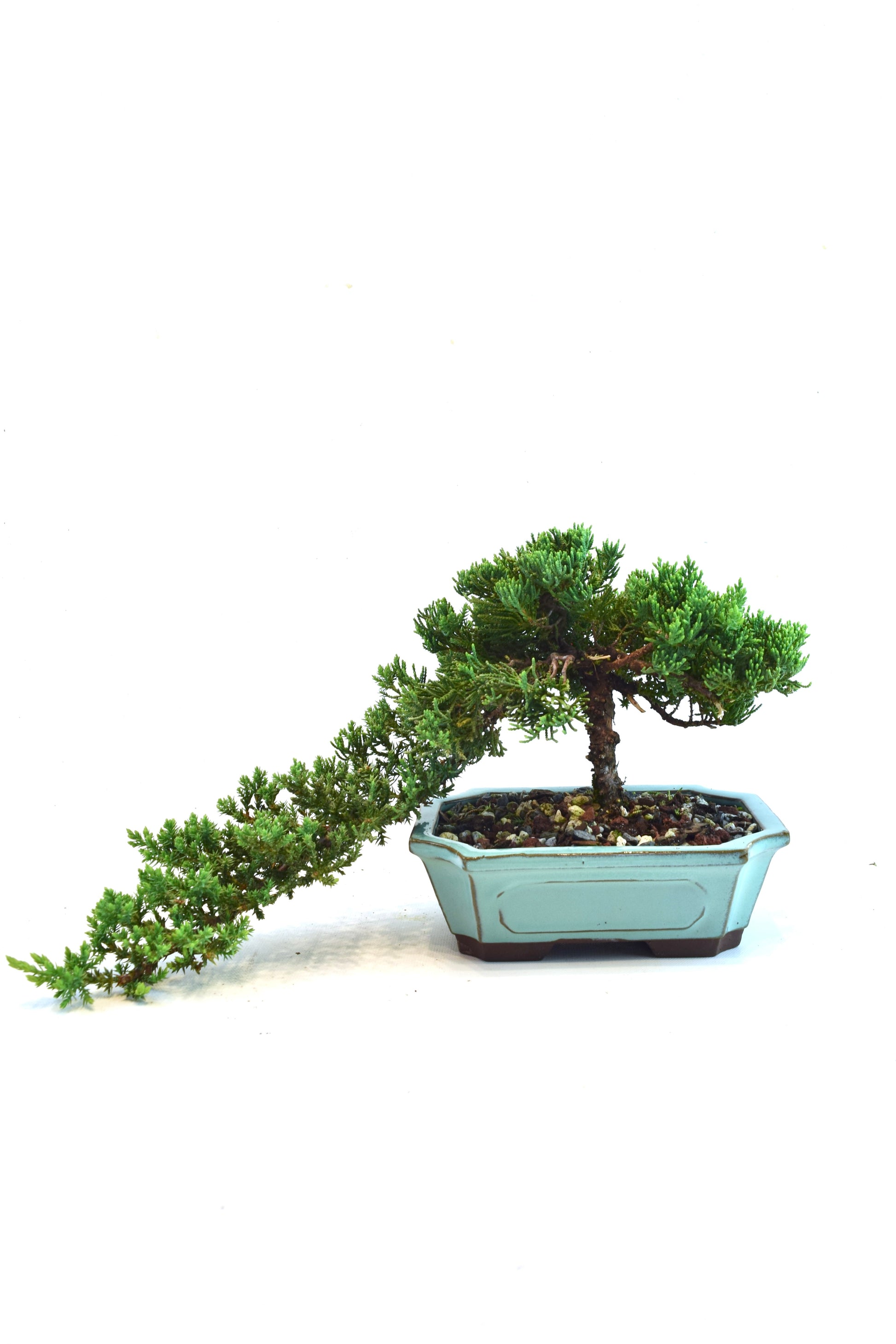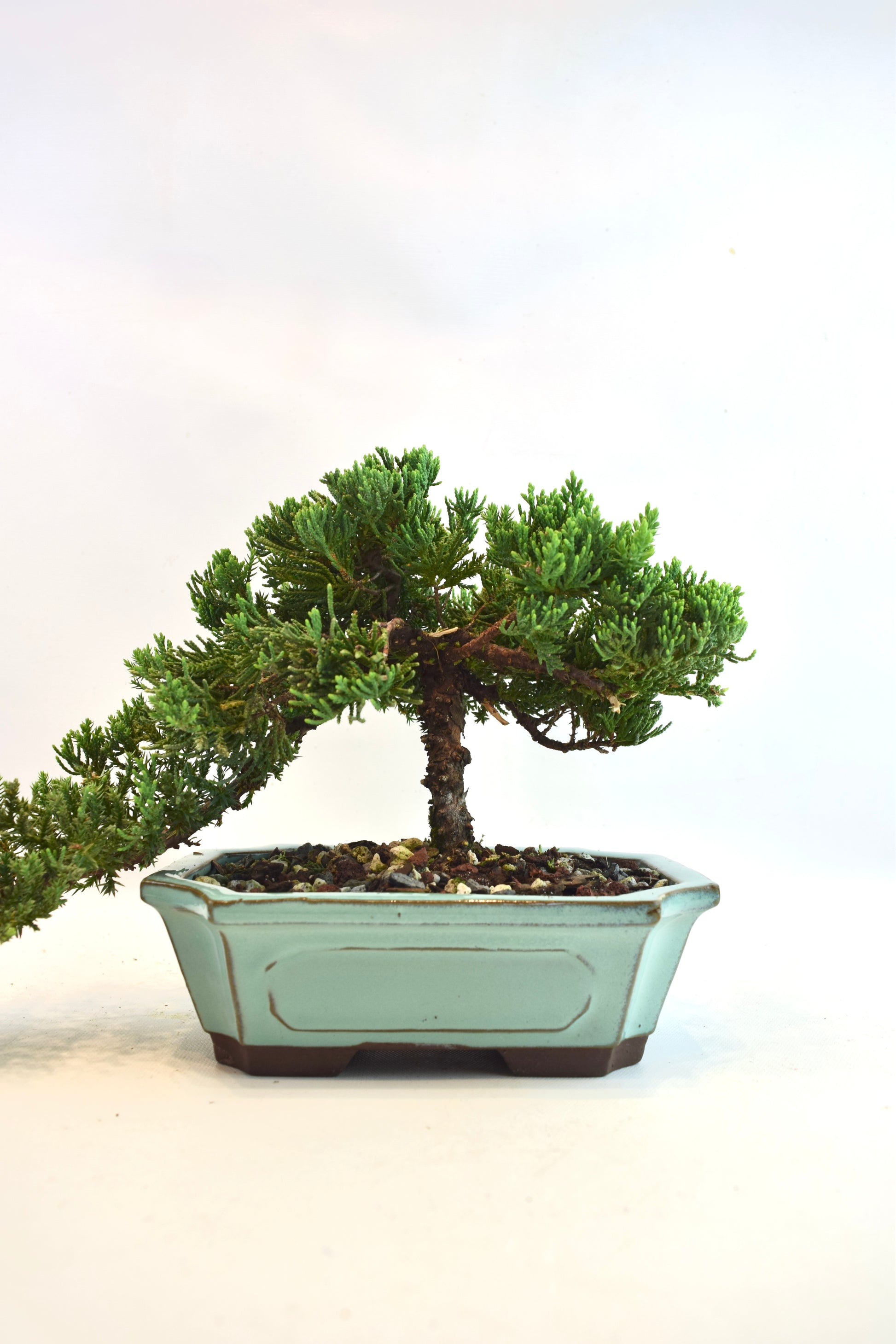Juniper Live Bonsai Ceramic 7.5" Pot - One of a Kind Bonsai
Juniper Live Bonsai Ceramic 7.5" Pot - One of a Kind Bonsai
A classic outdoor bonsai with elegant, flowing growth and needle-like foliage. Hardy and low-maintenance—perfect for training or display. One of a Kind
Pot Dimension: 7.5"
You’ll receive this exact plant.
Couldn't load pickup availability
Share
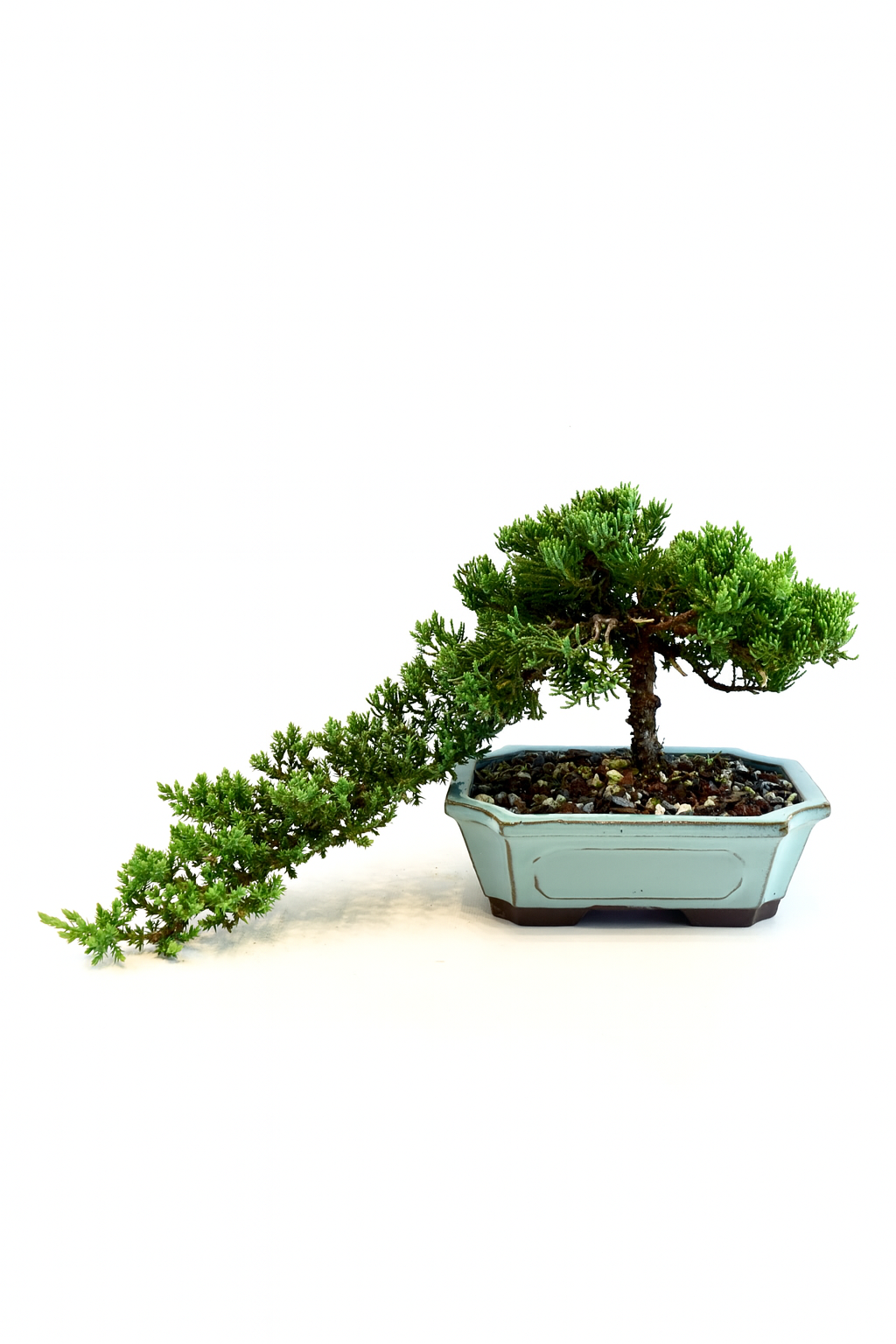
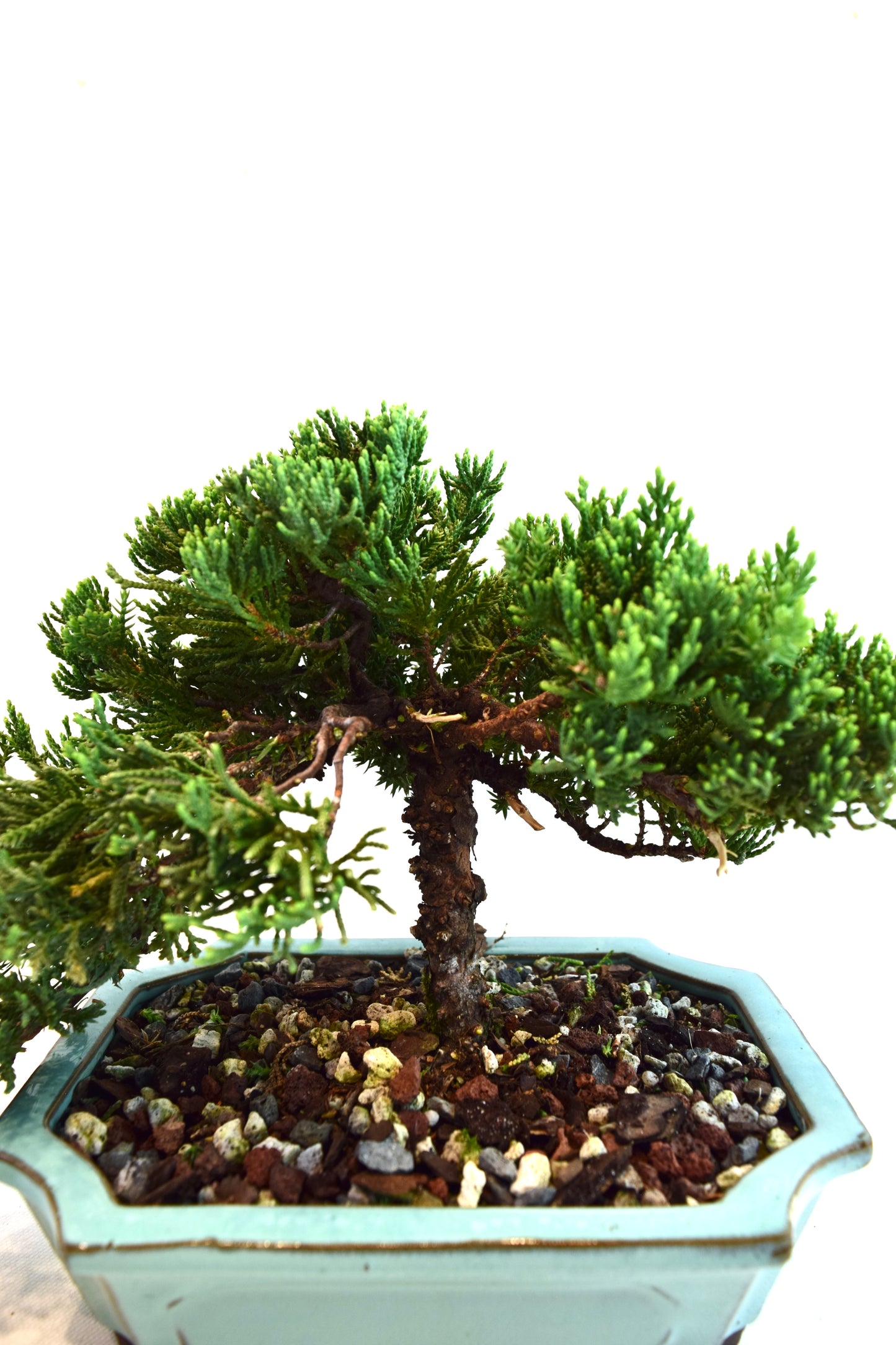
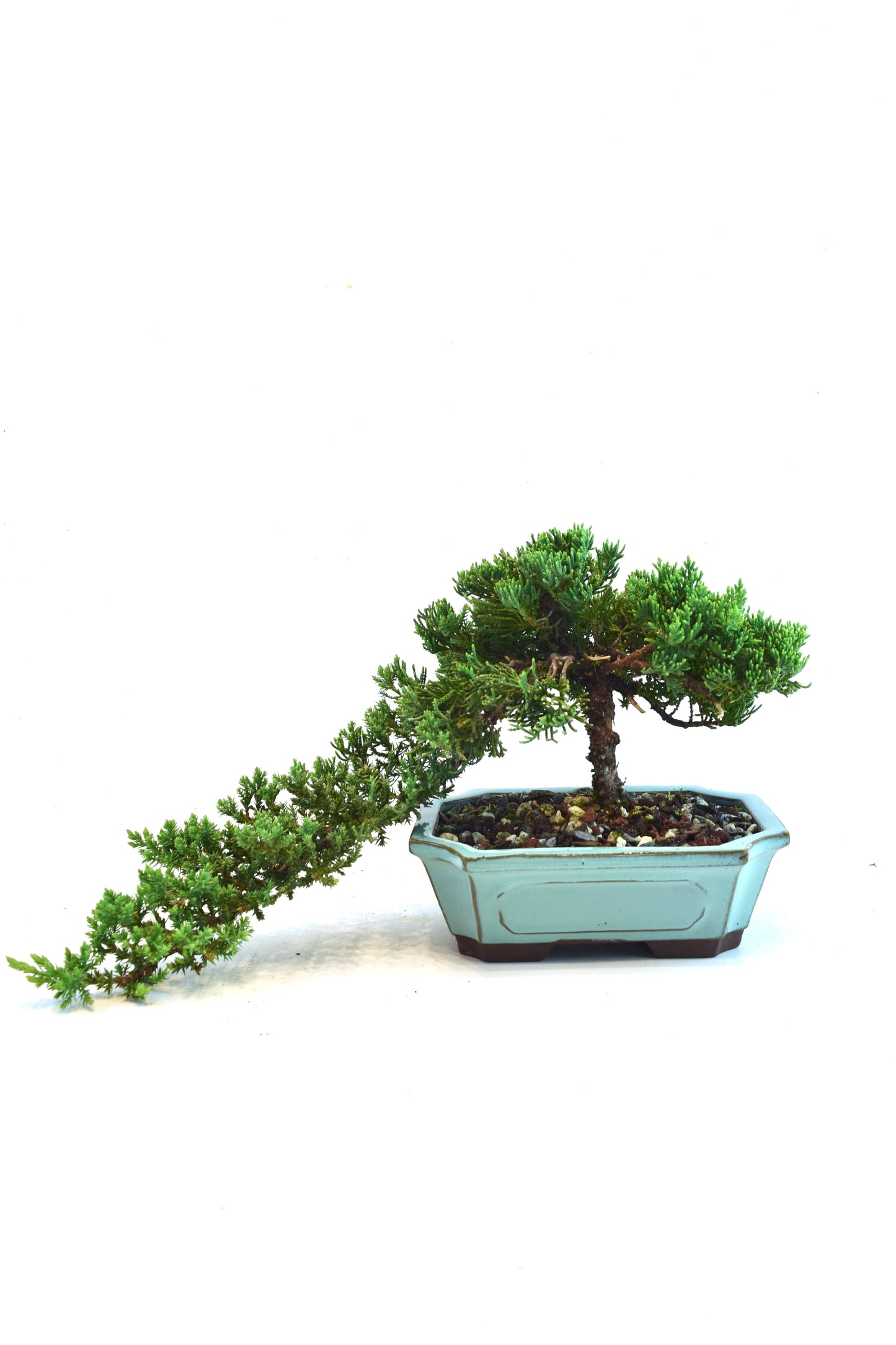
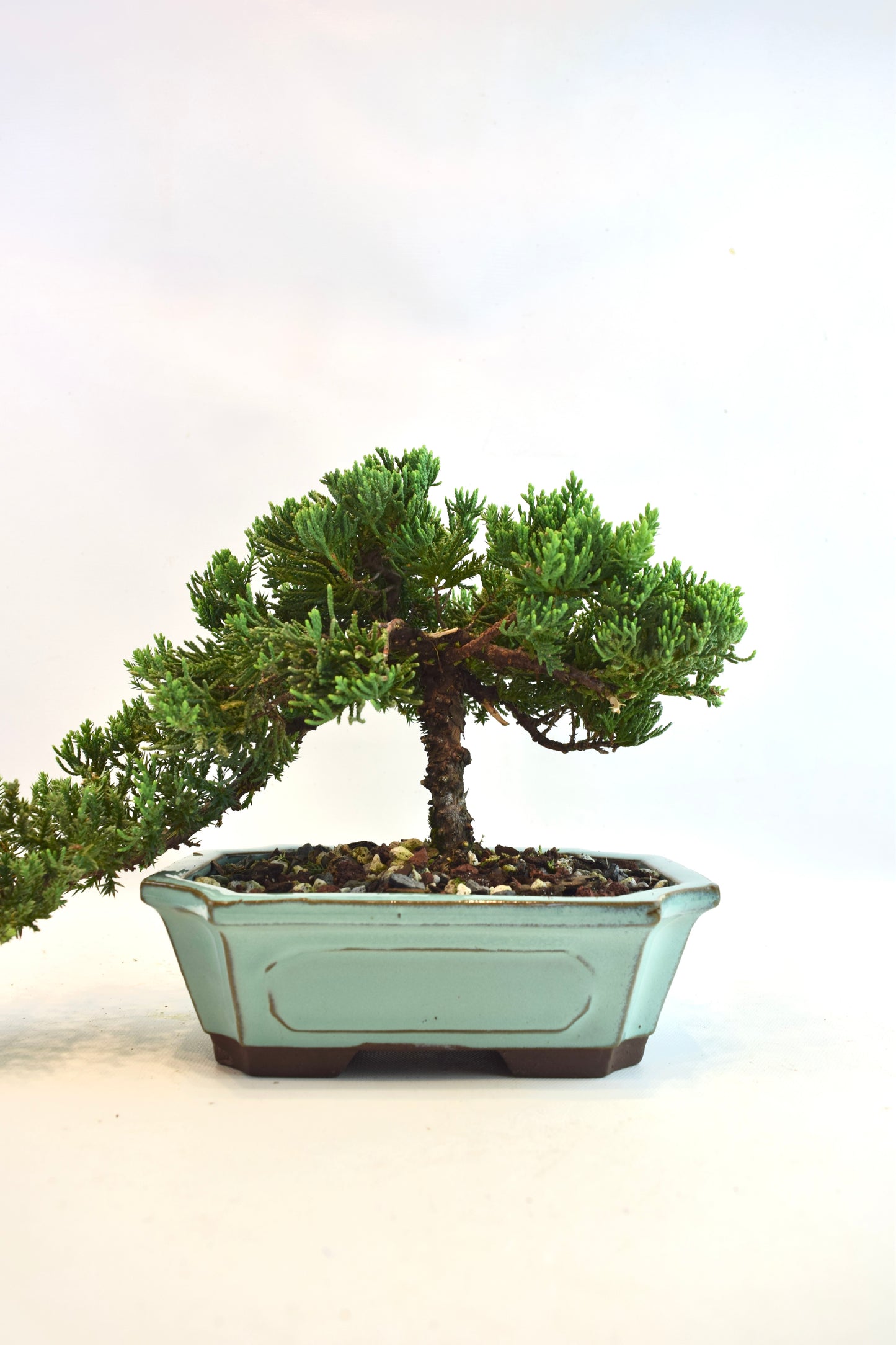
- DESCRIPTION
- ITEM DETAILS
- PLANT CARE
The Juniper (Juniperus procumbens ‘Nana’) is one of the most popular and iconic outdoor bonsai species. Known for its strong trunk movement, fine needle foliage, and cascading or informal upright styles, the Juniper brings a classic, serene presence to any garden or patio.
This hardy evergreen thrives outdoors year-round and is an excellent choice for beginners and collectors alike. Its lush, textured canopy and graceful lines make it a living sculpture that only improves with age.
Low-maintenance and drought-tolerant, the Juniper responds well to pruning and training, allowing you to shape and refine its natural beauty over time.
☀️ Lighting ☀️
Juniper bonsai thrive best outdoors in full sun. They love direct light and require at least 6 hours of sunlight per day to stay healthy and maintain dense foliage. Avoid keeping your Juniper indoors for long periods, as lack of sunlight will weaken the tree. A bright balcony, patio, or garden spot is ideal.
💧 Watering 💧
Junipers prefer soil that is kept slightly moist but never soggy. Water thoroughly when the topsoil feels dry to the touch, allowing excess water to drain. Do not let the soil completely dry out, but also avoid standing water or overly wet soil. Mist the foliage occasionally to keep needles hydrated, especially in hot or windy conditions.
🌥️Weather☀️
Junipers are cold-hardy and suitable for year-round outdoor growing. They can tolerate a wide range of temperatures but should be protected during severe freezes (below 15°F / -9°C). In colder climates, place in a sheltered area or mulch the pot in winter. Avoid bringing Junipers indoors unless absolutely necessary—they thrive best with seasonal outdoor conditions.

